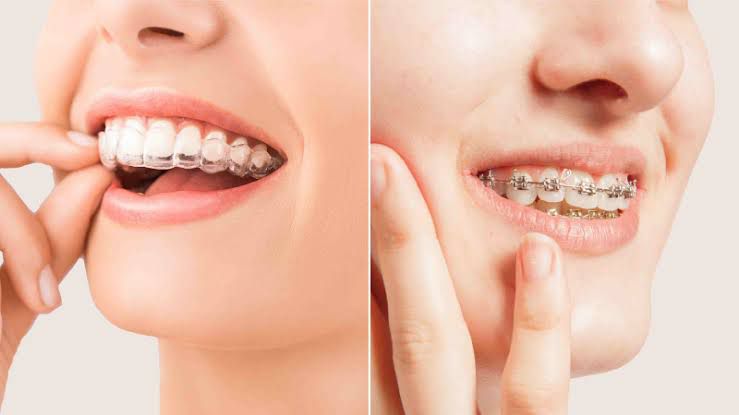


A beautiful smile is more than just straight teeth—it's a reflection of confidence, health, and self-expression. If you've ever thought about fixing crooked teeth, closing gaps, or correcting your bite, you’ve probably heard about braces and aligners.
Orthodontic treatment has come a long way in recent years. Today, you have more choices than ever when it comes to straightening your teeth. But which option is right for you? Let’s explore the world of braces and aligners so you can make the best decision for your smile.
Both braces and aligners are orthodontic tools used to move your teeth into a better position over time. However, they differ in their design, appearance, and how they work.
Braces are fixed metal or ceramic brackets that are glued to the teeth. They are connected by wires and sometimes rubber bands, which apply pressure to gradually shift the teeth into alignment. They are adjusted every few weeks by an orthodontist.
Aligners are clear, removable plastic trays that fit snugly over your teeth. Brands like Invisalign, ClearCorrect, and others offer customized aligner sets that are changed every 1–2 weeks. Each set moves the teeth slightly closer to the final position.
Orthodontic treatment is not just cosmetic—it’s about oral health too. Here’s why it might be necessary:
Left untreated, these issues can lead to gum disease, tooth decay, jaw pain, and even self-esteem problems.
Most common and effective for all kinds of cases. They use metal brackets and wires and allow colorful bands. Affordable, durable, but highly visible.
Tooth-colored brackets for a less noticeable appearance. They work like metal braces but are slightly more fragile and expensive.
Brackets are attached to the inner side of the teeth, making them invisible from the outside. Custom-made for each patient, though less comfortable and more expensive.
The most recognized aligner brand, using SmartTrack material for better fit and control. Suitable for mild to moderate cases.
Custom-made and similar to Invisalign but offers slightly more flexible treatment options.
Some dental clinics offer their own version of clear aligners, custom-designed and 3D printed on-site—a cost-effective alternative.
| Feature | Braces | Aligners |
|---|---|---|
| Visibility | Visible (except lingual) | Nearly invisible |
| Removability | Fixed | Removable |
| Comfort | Can cause irritation initially | Smooth and gentle |
| Maintenance | Needs regular cleaning | Easy to clean (remove & brush) |
| Diet Restrictions | Yes (no hard/sticky foods) | No food restrictions |
| Best For | Complex cases | Mild to moderate cases |
| Adjustments | Monthly dental visits | New trays every 1–2 weeks |
| Cost | Generally lower | Slightly higher (varies) |
Every smile is different, so your dentist or orthodontist will help you decide which option suits your needs best.
Your orthodontic journey starts with a detailed consultation. Your dentist will examine your teeth, take X-rays or 3D scans, and discuss your concerns.
Whether you choose braces or aligners, a custom plan is created for your teeth. This plan outlines how your teeth will shift and how long treatment will take.
Braces: Brackets are fixed on your teeth and connected with wires.
Aligners: You receive your first set of clear trays, which you change periodically.
You’ll visit the clinic every few weeks for adjustments (braces) or to monitor progress (aligners).
Once your teeth are aligned, a retainer is essential to maintain the new position. Without it, teeth can slowly shift back.
Truth: Adults of all ages can benefit from orthodontic treatment.
Truth: For mild to moderate cases, aligners can be just as effective.
Truth: You may feel mild pressure or discomfort initially, but it’s temporary.
Truth: They offer discreet treatment, and many clinics provide flexible payment options.
Treatment time depends on your case severity and type of appliance:
With consistent wear and regular check-ups, most patients complete their treatment on schedule.
Costs vary based on:
Most dental clinics offer easy EMI options, and some insurance plans cover orthodontic treatment. Don’t hesitate to ask about payment plans during your consultation.
Whether you go for traditional braces or modern aligners, the goal is the same: a healthy, aligned, and confident smile. Orthodontic treatment is an investment—not just in how you look, but in your long-term oral health. With the right guidance and care, you’ll be smiling for years to come.
At Dentist Adda, we offer:
Let’s create a smile you’ll love to show off. Book your consultation today!

